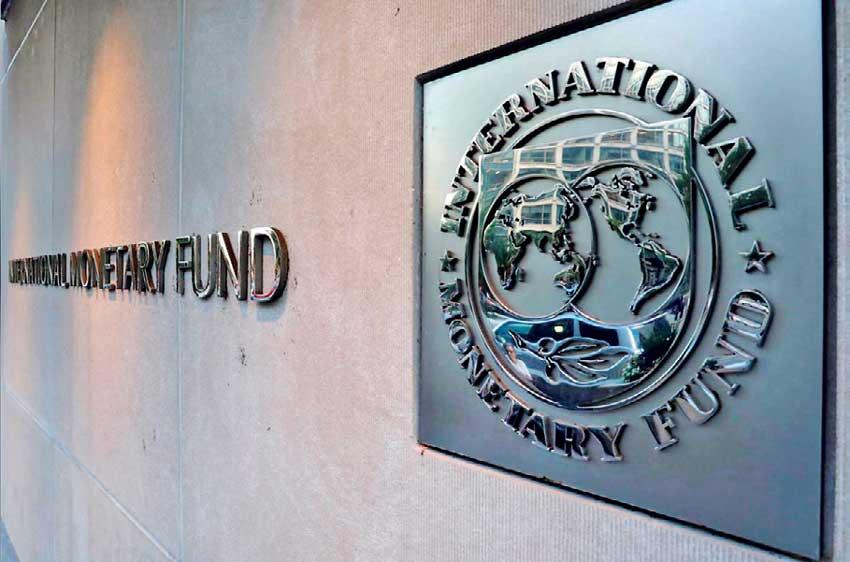30 Apr 2020 - {{hitsCtrl.values.hits}}

According to Moody’s Investors Service, Sri Lanka’s government has sought US $ 800 million from the International Monetary Fund (IMF) over the next two years, under the latter’s Rapid Financing Facility, as the government is reorienting its external funding lines towards multilateral and bilateral creditors, since the international capital markets have dried up.
Sri Lanka wrote to the IMF three weeks ago seeking liquidity support in its battle against the new coronavirus and a spokesperson of the IMF said they would begin reviewing the letter in the third week of April.
It wasn’t immediately known whether the Sri Lankan government sought to convert its ongoing Extended Fund Facility (EFF) programme with the IMF to a Rapid Facility or it wanted to go for a fresh programme under the Rapid Financing Facility.
“We received a letter from the Sri Lanka government about our Rapid Credit Facility programme. So, we are now starting to review it. And we are now discussing with the government whether they want to switch their previous programme into our new Rapid Facilities. So, we will discuss this, this week,” IMF Asia and Pacific Department Director Changyong Rhee said. Meanwhile, Moody’s yesterday joined the drumbeat of warnings against the external debt refinancing risks facing the Sri Lankan government, as a result of to its impaired access to the international capital markets, due to the widened spreads between Sri Lankan international sovereign bonds and the US Treasuries.
In recent weeks, the spreads between the two debt instruments have sharply risen by around 1600 basis points.
The rating agency said Sri Lanka has on average US $ 4.0 billion to US $ 4.5 billion annually to be serviced over the 2020-2025 period or around US $ 25.8 billion in total.
“This amount includes international sovereign bonds of US $ 1.0 billion each in October 2020 and July 2021. It does not account for any further external financing of the budget deficit in coming years.
Dollar international sovereign bonds account for US $ 8.4 billion or about 30 percent of all maturing external government debt service payments over 2020-25,” the rating agency said.
Moody’s estimated Sri Lanka’s foreign exchange reserves by end-March at US $ 7.1 billion, slightly less than four months of goods imports’ cover.
The principal external debt repayments during 2020, as a percentage of the prior year-end foreign reserves, were estimated at slightly less than 50 percent.
Considering the government’s heightened debt refinancing risks and fiscal woes, exacerbated by the pandemic, Moody’s placed Sri Lanka’s B2 rating on review for potential downgrade fortnight ago while Fitch Ratings downgraded the sovereign to B- with a Negative outlook last week.
However, the Sri Lankan government has taken measures to secure finance from non-market sources, which include both lending and swap lines.
Sri Lanka has secured a US $ 500 million syndicated loan from China Development Bank and it has potential to increase up to US $ 1.2 billion by the end of the year.
Meanwhile, the government has also requested additional funding from other multilateral lenders such as the Asian Development Bank, World Bank and Asian Infrastructure Investment Bank (AIIB) and Agence Française de Développement, Moody’s added.
Further, the Central Bank is also said to be working on securing swap line arrangements with other central banks to buffer external repayment risks.
These include a US $ 400 million swap line with the Reserve Bank of India, which has been approved by the Cabinet of Ministers and a US $ 1.5 billion equivalent swap line in renminbi with the People’s Bank of China.
“While such measures do temporarily boost foreign exchange reserves, they are time-bound and represent a liability to the monetary authority. They do not meaningfully increase foreign exchange reserves as do non-debt-creating inflows, such as export receipts or foreign investment, either portfolio or direct,” Moody’s noted.
17 Nov 2024 30 minute ago
17 Nov 2024 47 minute ago
17 Nov 2024 4 hours ago
17 Nov 2024 4 hours ago
17 Nov 2024 4 hours ago